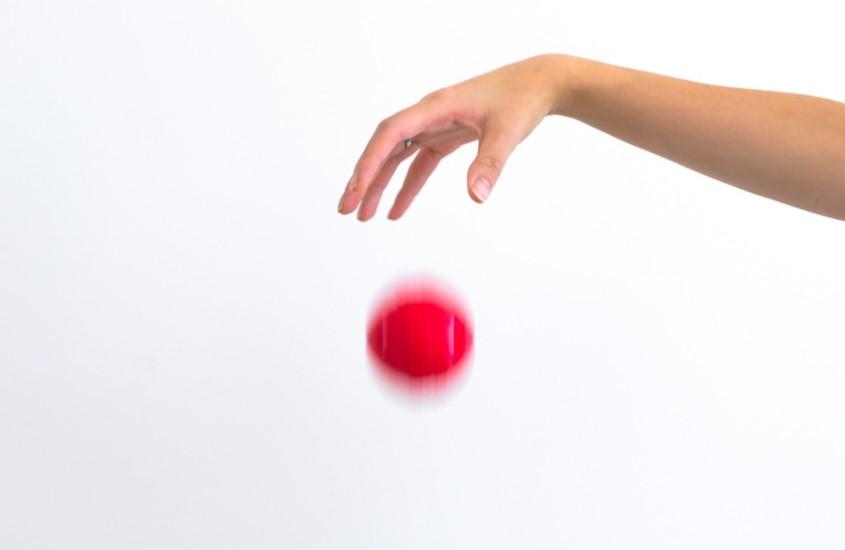
Imagine standing on the tallest building in the world and dropping a ball straight down. Where would the ball land? Since the gravitational acceleration is constant and due to the rotation of the earth, the ball does not land at a position directly below its initial drop point. Now, there is no "deflection" to the ball and the ball still moves in a straight line due to gravity. However, if you are an earth inhabitant, you might perceive this ball to deflect. These two different perspectives are classified as inertial and noninertial reference frames respectively. We are interested in the noninertial reference frame(or rotating reference frame) for this specific discussion. That perceived deflection in the ball's trajectory is called Coriolis acceleration.
Another thing to keep in mind is that, in a rotating circular object, the outer layers(bigger radii) have higher angular velocity than the inner layers(smaller radii). This means that, at the beginning of this drop, the ball experiences bigger Coriolis acceleration than when the ball is at a lower height.
First, let $\omega$ be the angular velocity of the earth's rotation. Since earth is a sphere, we must also take into account the variability of tangential velocity at different latitudes(shown in the picture as $ \phi$).

Therefore, the real angular velocity specific to a latitude must be the horizontal component of the earth's angular velocity, or $2v \omega cos(\theta)$ where velocity relates to the gravitation acceleration. The full derivation of this term can be found here but this term is the Coriolis acceleration. As I mentioned earlier, the Coriolis acceleration only exists in the non-inertial reference frame. If you watch this from somewhere outside of earth, say on mars, you will see no change in direction or deflection.
Next , velocity can be replaced with $\displaystyle v=gt$, and the final coriolis acceleration of this scenario becomes $\displaystyle a=2\omega gt\cos\theta$.
To find the displacement, or deflection of where this ball will eventually land, the acceleration expression can be integrated two times with respect to time $t$.
$$\displaystyle v_{deflection}=2\omega g\cos\theta\int\limits_0^tt' dt' = \omega g\cos\theta t^2$$and finally...
$$\displaystyle x_{deflection}=\omega g\cos\theta \int\limits_0^t t'^2 dt'=\omega g\cos\theta {t^3\over 3}$$With this, we can derive the deflection of any object dropped from height (but ignoring the variation of gravity with different heights), given the height, and where the object is dropped in latitude. For instance, Say a ball is dropped from 100 meters high and at a latitude of 42 deg. We can first find $t$ through using a SUVAT equation $\displaystyle h={1\over 2} gt^2$, and therefore $\displaystyle t=\sqrt{2h\over g}$. Substituting this in the equation that we just derived:
$$\displaystyle x_{deflection}={\omega\cos\theta\over 3}\sqrt{8h^3\over g}$$Now, just substitute the values, as well as earth's rotation which is 7.27 x 10^-5 radian/sec, we can obtain a value of 5.16 mm, which is very small. This shouln't be surprising since it is only 100 meters of height. Lastly, you might wonder in which direction does this ball deflect. The answer is east. Mathmatically, in more complicated cases, the equations should incorporate unit vectos and use the "right-hand rule" to determine the direction resulted from vector cross products.